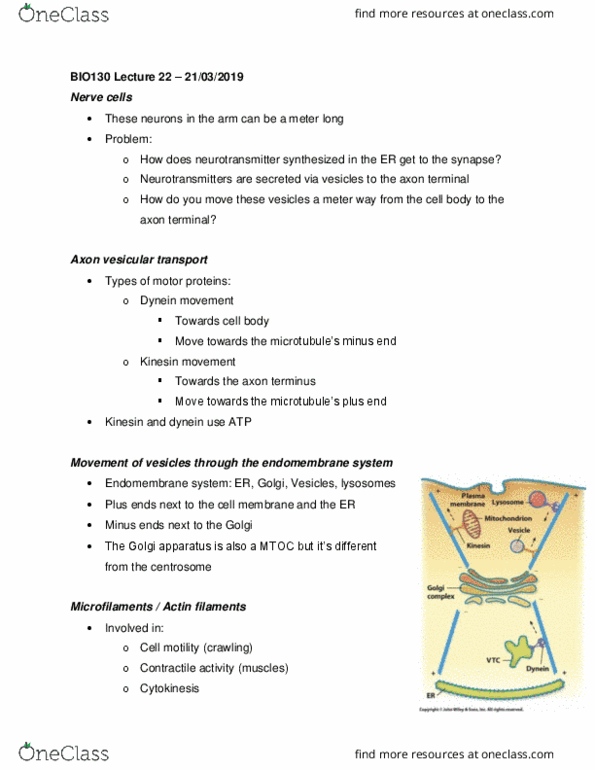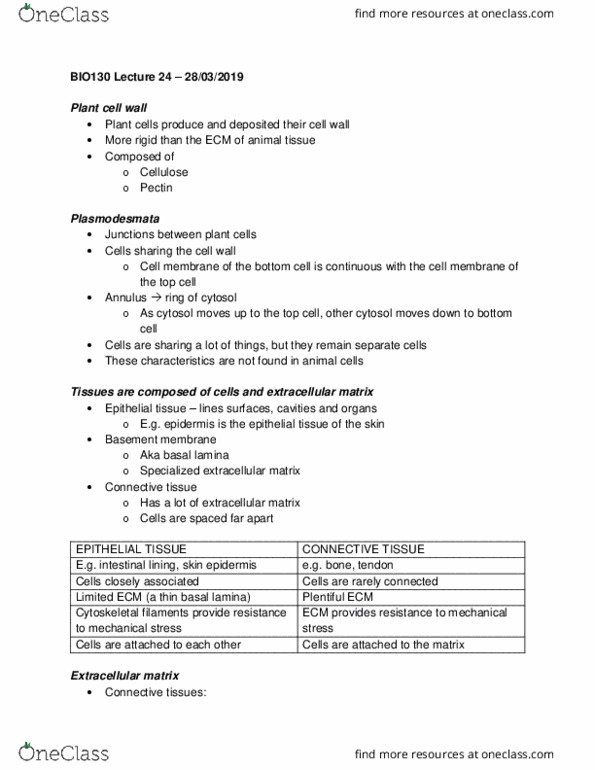BIO130H1 Lecture Notes - Lecture 23: Keratin, Occludin, Adherens Junction
BIO130H1 verified notes
23/26View all
Document Summary
Types of junctions: anchoring junctions, occluding junctions, channel-forming junctions, signal-relaying junctions. All present in epithelial cells (first two hold the sheet of cells together) Remember epithelial cells are cells that line surfaces, cavities and organs. Tight junctions: create a tight seal between cells, prevent mixing of the extracellular environments, act as fences in the membrane, prevent mixing of membrane proteins, apical membrane proteins, basal membrane proteins. Claudin and occludin proteins form a seal: transmembrane proteins, extracellular domains. Anchoring junctions: cell-cell anchoring junctions, adherens junctions, desmosomes, cell-matrix anchoring junctions, hemidesmosomes, link the cytoskeletons of neighboring cells, different proteins are involved in different types of interactions. Adhesion and anchor proteins link cytoskeletal filaments of neighboring cells: adhesion proteins, transmembrane proteins, the extracellular domains interact with, adhesion proteins (neighbor, extracellular matrix. Intracellular domains interact with anchor proteins: anchor proteins, link the adhesion proteins to cytoskeletal filaments, cytosolic proteins.




